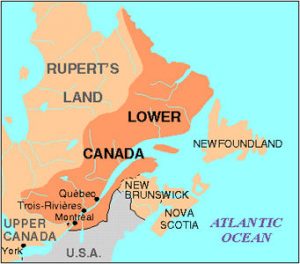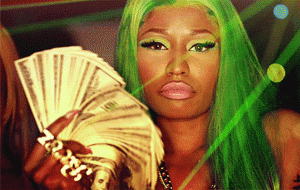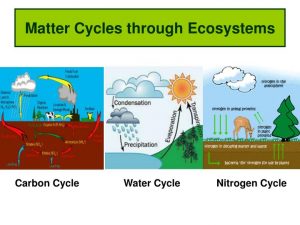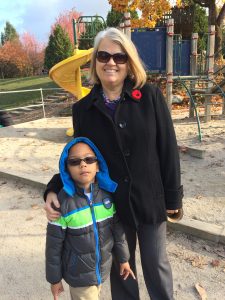Confederation. It brought together the land we today call home. The road to confederation was not an easy one, but we have currently been learning all about it. At first, Upper and lower Canada consisted of the French and the English. There French and the English never really saw eye to eye, and this was for many reasons. First of all, there was the obvious language barrier, then there was the fact that the French felt belittled by the English, and rightfully so. The English controlled the government and had power over all decisions made in Canada, which led to more and more of a divide between the English and the French. Sometimes when certain things are required by one side but aren’t exactly beneficial to the other side, compromise isn’t always the first resort. An example of this with the French and English could be seen in the rebellions of 1837, where the French held two separate uprisings against the British. The rebellions occurred for many reasons regarding things like land, money, power, and rights, but also for responsible government. The French wanted a responsible government, which is a government that requires an elective assembly to make decisions rather than being run by the family compact, which consisted of rich men that had been appointed by the British government. The French wanted change, and responsible government was that change. With a responsible government, the French could finally be able to have a say in matters of parliament, therefore have a higher chance of having their demands met, so they fought for this chance. The uprisings in upper and lower Canada caused some concern in the British government. In order to find the root of the problem, Queen Victoria appointed a man named Lord Durham (the governor general of British North America) to go and further investigate what caused the recent rebellious activity in upper and Lower Canada. Lord Durham’s final report back to Britain brought upon the Union act. The union act would mean that there would be no more Upper and Lower Canada, but one colony that consisted of Canada East and Canada West. Also, Canada would finally be a separate colony from Britain.
Years later, responsible government was finally achieved by none other than Lord Elgin, lord Durham’s son in law. Coincidence, I think not. It didn’t end here though. A group of politicians including George brown, John A.macdonald, George Cartier, and more, had a bigger plan on how they could get not only Canada East and west, but many of the other surrounding colonies to come together as one big colony. This idea was of confederation, the coming together of what we today know as Canada.
To display our knowledge of confederation and everything leading up to it, our class had started a project. We had previously been watching a lot of heritage minutes which are minute long videos on people places or events that are an important piece of Canadien history. For our project, we were tasked with creating our own heritage minute on a topic of our choice that hadn’t already had a heritage minute made about it. After observing and analyzing more heritage minutes that I can count, we actually got to FaceTime and interview the managing editor of Historica Canada, Davida Aronovitch. If you didn’t already know, Historica Canada is the company that creates heritage minutes. For the heritage minute that my group and I would be making, my group consisted of Adlih and Robin. We had decided on an overall topic of the mother’s of confederation. We chose this topic because of the fact that many people know of the fathers of confederation, but not many people know of the women who worked behind the scenes when bringing Canada together. We felt that it was only right to bring attention to the woman that made confederation possible, because they didn’t get all of the recognition that they truly deserved for their efforts back then, so why not give it to them now. Once we had chosen our topic we had to do the research. We researched a handful of woman who qualified as mothers of confederation, until we narrowed it down to one woman who we felt best fit our project. We chose Anne Brown, wife of George Brown, one of the main fathers of confederation. Anne is a mother of confederation because of the major influence she had over her husband George. She convinced him not only to apologize to the French, but to team up with his rival, John A. Macdonald, to push for confederation. Without Anne’s hold over George, he would’ve never set aside his hatred for John, and they would’ve never teamed up and come up with the magnificent idea of bringing all of the colonies together as one.
We had also been learning about proper script making and how to create a professional script like the ones used for movies and tv shows. Underneath is a copy of the script that my group had created for our heritage minute. We had planned that our heritage minute would be from the perspective of Anne, and that she would be writing a letter to George. We would include flashbacks of important events in Anne’s life, like when she first met George, and when George left for the conference in Charlottetown. Also, the letter would include dialogue of Anne convincing George to team up with John.A, and reassuring him that it is the right decision.
After the script we created a storyboard of all the events that would take place from the script. Then we started to actually film. After getting a peer critique on our first draft from both my classmates and teacher, my group worked on editing the video and we ended up getting our second draft. For the second draft we added redid the audio, and added some scenes before yet another critique. Except this time, we showed not only our peers, but a bunch of other grade nines from in a different humanities class. We fixed the last few things in our video and finished off the project with a finished product that we were proud of, and I think it’s safe to say that we did a pretty great job!
here is our final heritage minute video.
This project really taught me the depth of how long and hard the process of bringing Canada together really was. Not only that, but how to successfully create an aestheticly pleasing and informational heritage minute. To think, before this project, I didn’t even know what a heritage minute was. Through the research of this project I was even able to discover my favourite heritage minute on Viola Desmond. All of the actors in this minute were on point and really gave the film emotion, plus, the message or really powerful and is one of the most interesting of all of the heritage minutes i have watched. Overall, I was really proud of the end product of that my group had created and perfected, and had a great time during the creating process. I hope to do another project like this in the future!



























































